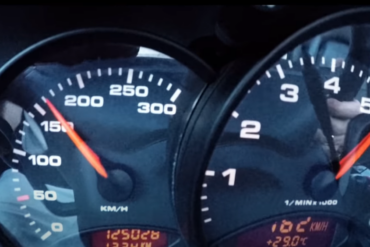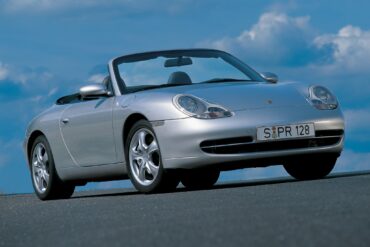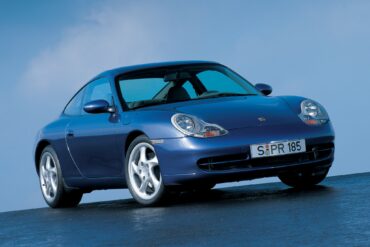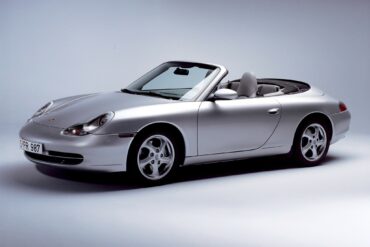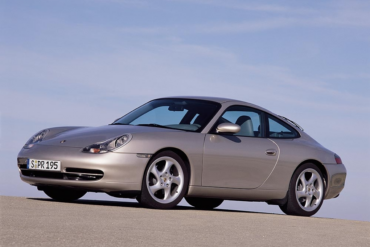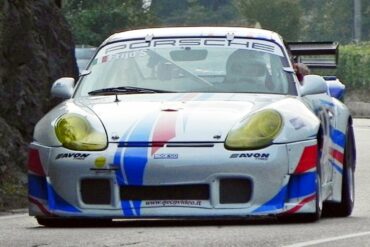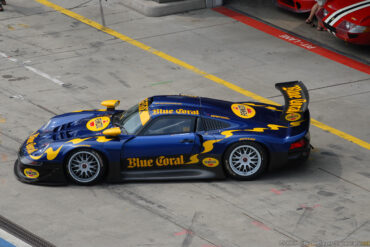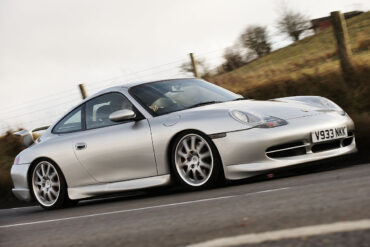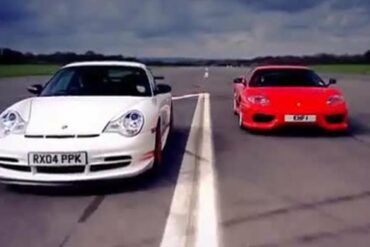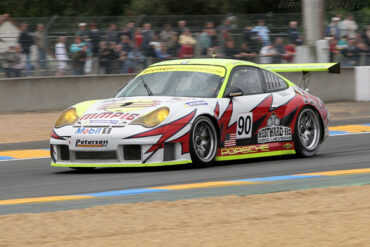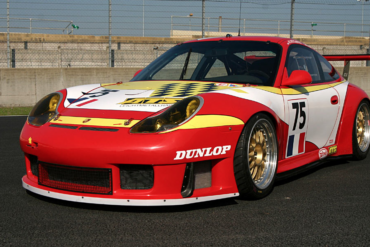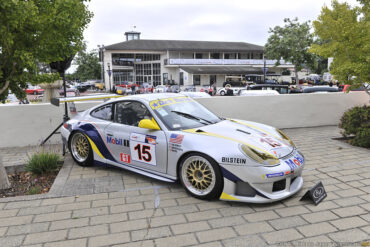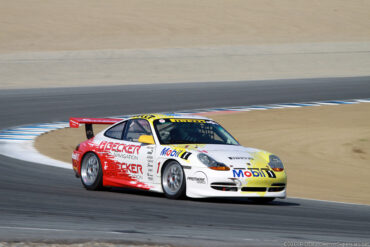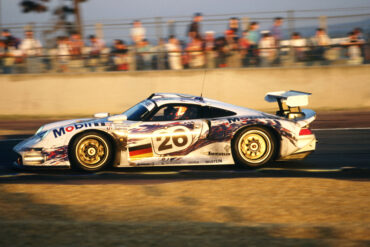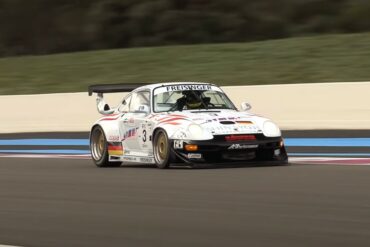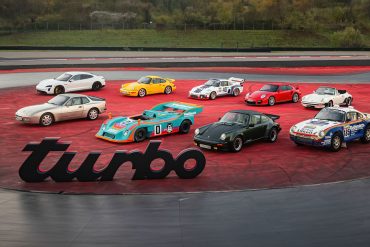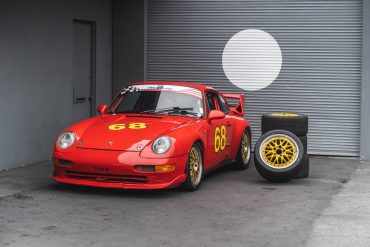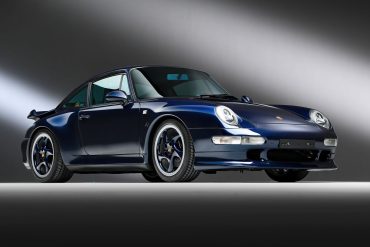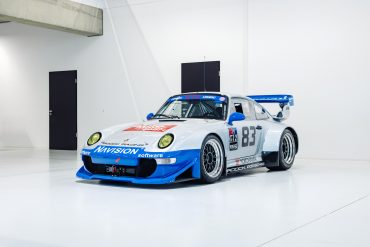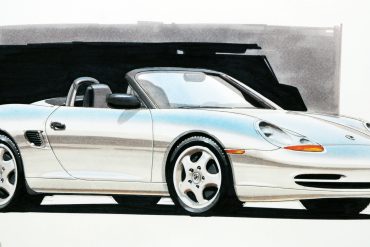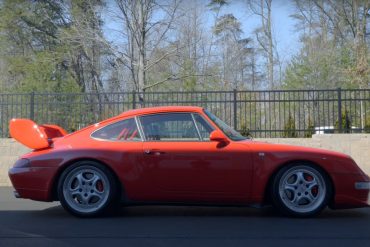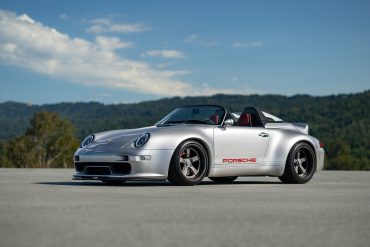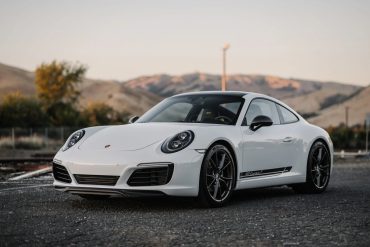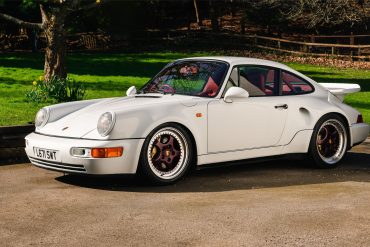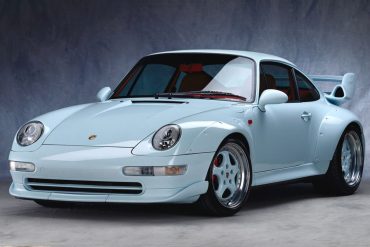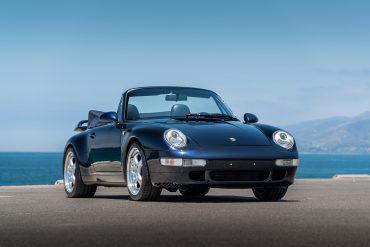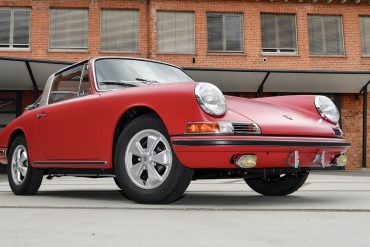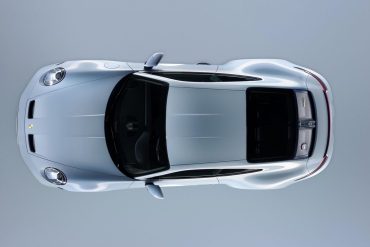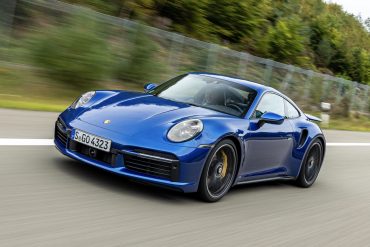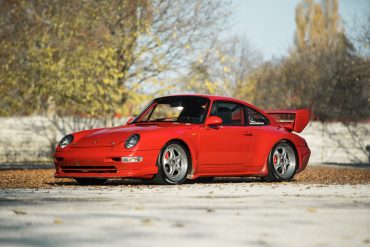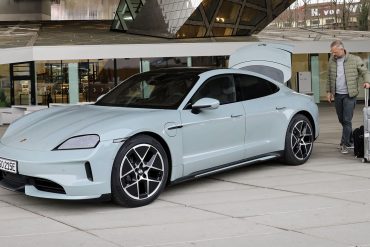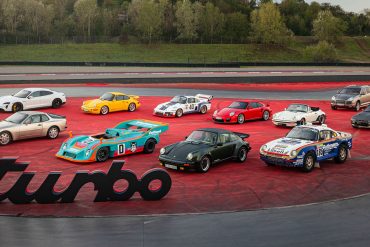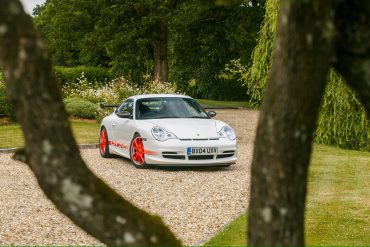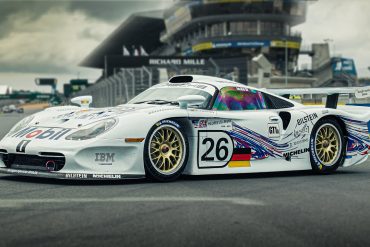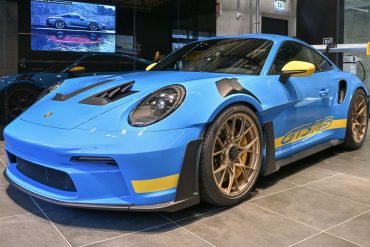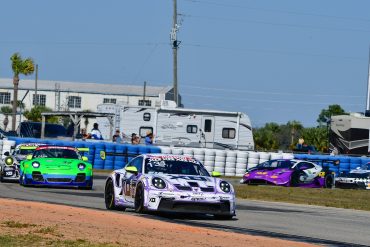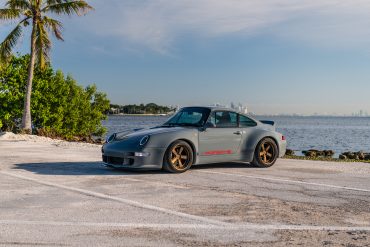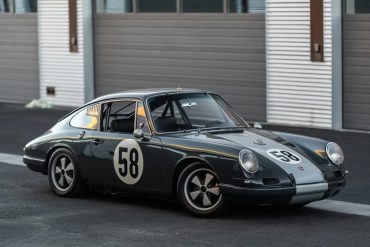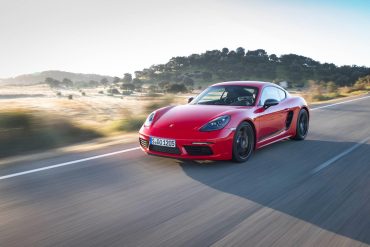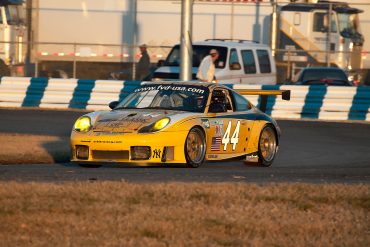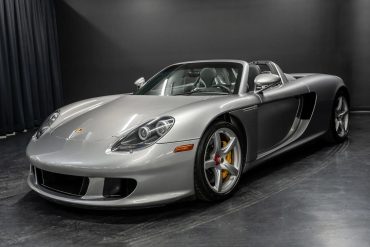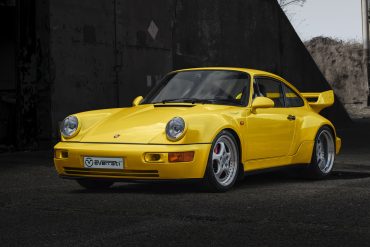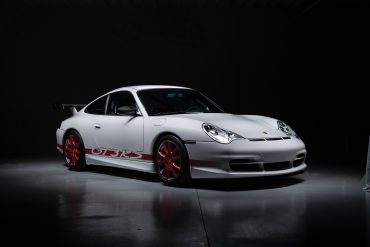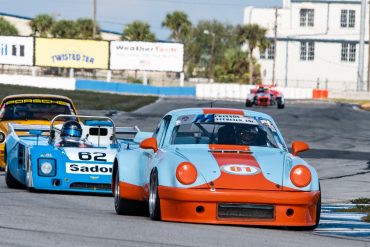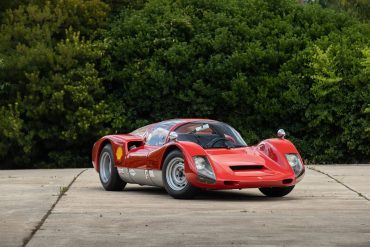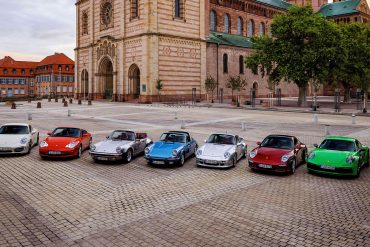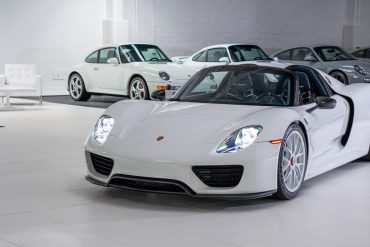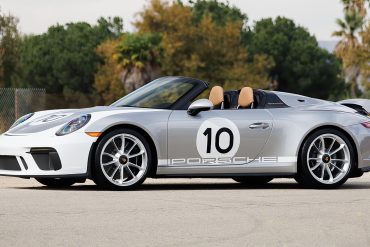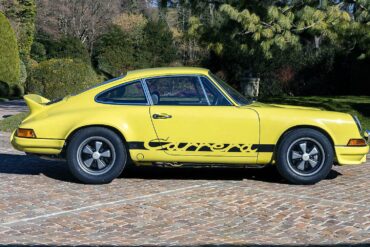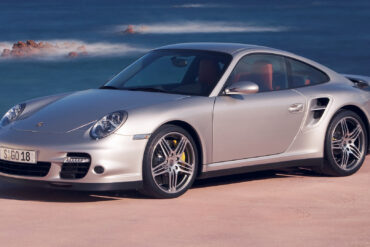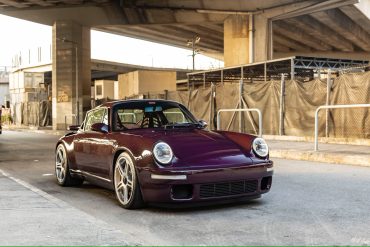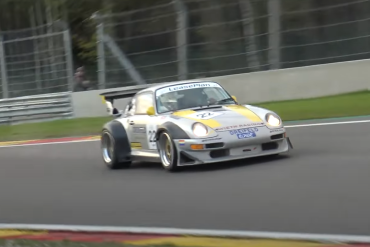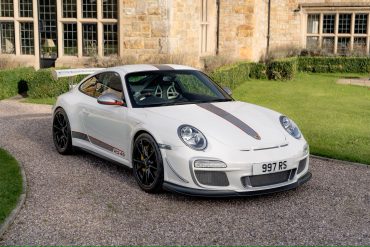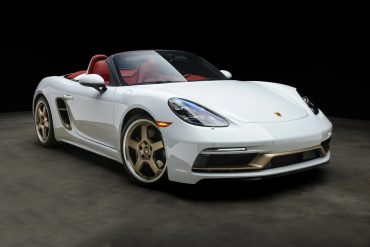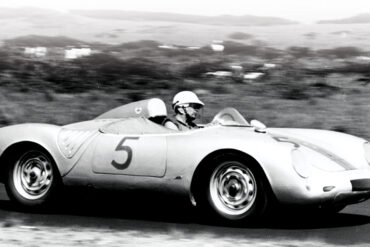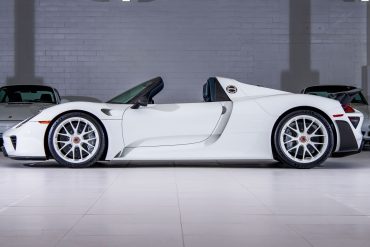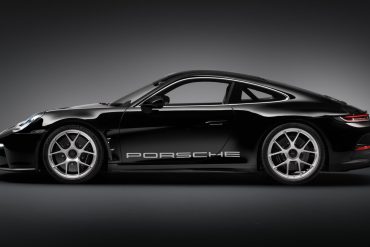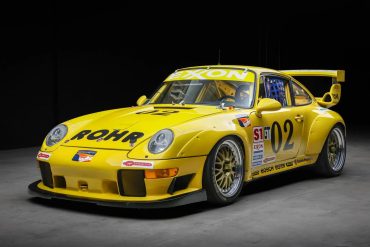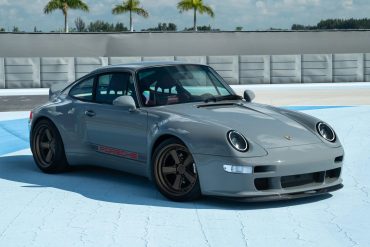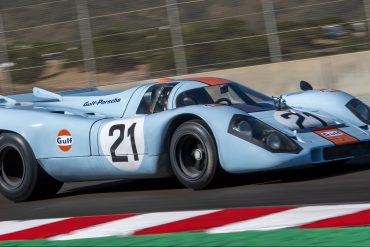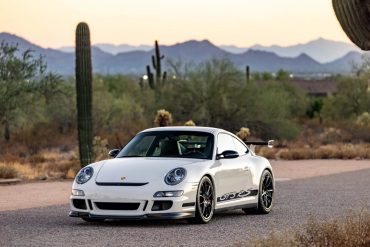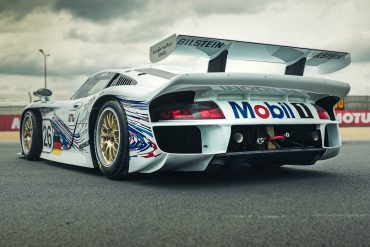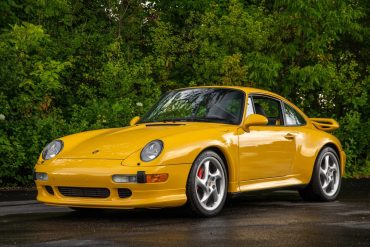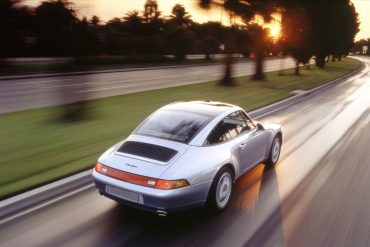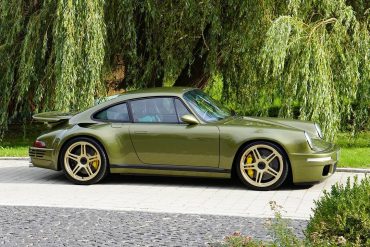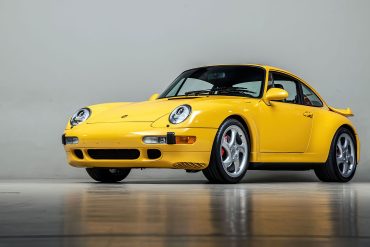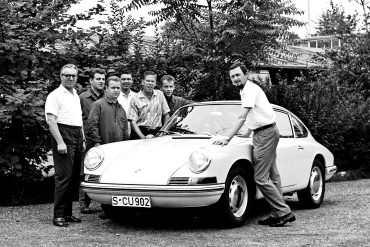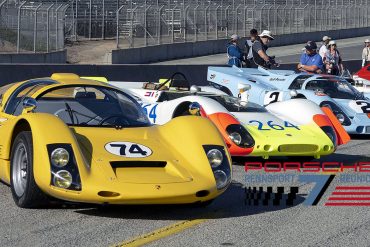Hard Acceleration in 996 Carrera Scene taken from Episode 6 of cars moving parts by isaflummi. Acceleration to V-Max on...
687 results for
996
The 996 Cabriolet was introduced in March 1998 at the Geneva Motor Show. The 996 Cabriolet was long ready (remember, it was tested already in 1995), but for marketing and production-related reasons it was launched in 1998 as a 1999 model. While the evolution with the 911 coupe was questionable from 993 to 996, the real evolution came with the cabriolet. In USA - the biggest market - 911 Cabriolets outsold the Coupés. The all-wheel-drive system provides between 5-40% of torque to the front wheels depending on the situation.
Since 1989, the rear-wheel-drive Carrera has always been accompanied by an all-wheel-drive Carrera 4, and the 996 was no different. Overlapping with the last year Carrera 993'S, the 996 Carrera 4 represented two major changes for the venerable 911 lineage: a water-cooled flat-6 engine replaced the air-cooled engine used in the previous 911 model, and the body shell received its first major re-design. Engine was 3.4 L and power was 296 hp featuring a change to an "integrated dry sump" design and variable valve timing.
The flat six in the Carrera 996 was a newly-developed flat-six engine that offered 300 hp. It was mated as standard with a six-speed manual. A 5-speed automatic (Tiptronic) with manual override to shift gears was on the options list. As always, the Carrera 2 was rear-wheel-drive. Designed as a grand tourer, the Porsche Carrera Cabriolet was the base version for the open-top 911 range in 1998. The retractable roof was able to be stowed away in 20 seconds at speeds of up to 50 kph (31 mph), like the rest of the 911 convertible range. With the roof up, the car was tested in the wind tunnel at speeds of up to 338 kph (210 mph).
The 996 series was a monumental update to the 911 story. The Type 996 introduced water-cooled engines and it also ushered in a new body design. The roof line with a windscreen which is around five degrees flatter gives the side view a more fluid look. Gone was the "classic" 911 design, the entire main body now much sleeker. The flat six in the Carrera 996 was a newly-developed flat-six engine that offered 300 hp. It was mated as standard with a six-speed manual. A 5-speed automatic (Tiptronic) with manual override to shift gears was on the options list. As always, the Carrera 2 was rear-wheel-drive.
Evo Track Battle in a 996 GT3 vs Cayman GTS The all-new Porsche Cayman GTS could be the best sports...
Turn Up the Volume to the Perfect Flat 6 Screaming Sounds This video is about a couple of Porsche 996...
Porsche 996.1 v 996.2: Every Detail Revealed DRIVETRIBE’s Editor-at-Large introduces his 150,000-mile, 996-generation Porsche 911…...
1996 Porsche 911 GT1 Pictures & Gallery...
Porsche 911 (996) Technical Specs & Performance Porsche 911 (996) Coupe & Cabriolet Specs Porsche 911 (996) GT Car Specs...
Clarkson Spanks the Porsche 996 GT3 RS vs Ferrari 360 Track days with Jeremy Clarkson and the Porsche GT3 RS...
Based on the road-going 996 911 GT3 RS, the GT3 RSR features improvements to its predecessor in all key areas. The vehicle is available in an ACO (Automobile Club de l'Ouest) version for competing in Le Mans and in the American Le Mans Series as well as in a FIA specification. The 911 GT3 RSR features a modified front which improves downforce at the front axle. The 3.6-litre, six-cylinder boxer engine delivers 445 hp at 8,250 revs. Maximum torque is now 405 Nm at 7,200 rpm, with top revs reached at 8,500 (for the FIA specification with two 30.8 mm air restrictors). Race cars never got more exciting than this.
In the 2000 FIA GT Championship, the 996 GT3 R was the dominant racer in the new N-GT class and won every run. In the same year, the factory-supported Phoenix Racing won the 24-hour race at the Nürburgring. In 2001, the modified version, now called the 996 GT3 RS, was used. The vehicle was not only very successful in its class, it also achieved overall victories. Modelled on the 911 GT3 R, the GT3 RS race cars offered a number of technical improvements, which combine to ensure a racing car with optimal competitiveness. 50 racing cars were produced.
The 996 GT3 R was a one-year-only (2000 model year) special of which only 63 were produced. The car took the basic GT3 bones and amplified it for motorsport. The Mezger engine produced over 400 horsepower, while factory-fitted adjustable shock absorbers gave better handling. Most notably, the GT3 R wore carbon-fiber bodywork meant for ultimate light weight in motorsport. The 996 GT3 R was introduced in 1999 as a replacement for the 993 RSR. Before its introduction, it was extensively tested at Weissach and Paul Ricard. In the 2000 FIA GT Championship, the 996 GT3 R was in the N-GT class and won every run. Won the 24-hour race at the Nürburgring.
The 996 GT3 Cup served as the basis for the 996 GT3 road car, featuring a 3.6 litre engine with 355 hp. For the 1999 season the engine output was increased to 365 hp. For the 2001 season the GT3 Cup received modified aerodynamics including an enlarged rear wing and improved cooling. For 2002, the GT3 Cup received several changes, adopting facelift 996.2 features such as Turbo-style headlights. The new body significantly improves aerodynamics and cooling. Engine output was increased to 380 hp. For 20003 onward, the power was hiked once again, with the engine now pumping out 385 bhp @ 7250 rpm and of torque 288 ft lbs @ 6500 rpm.
In spite of its 911 moniker, the car actually had very little in common with the 911 of the time, only sharing the front and rear headlamps with the production sports car. Designed and developed to compete in the GT1 class of sportscar racing, which also required a street-legal version for homologation purposes. It was powered by a twin-turbo flat 6 that was good for 600 bhp. The 1996 911 GT1 clocked at a top speed of exactly 330 km/h (205 mph) on the legendary Mulsanne Straight.
The racing sportscar is prepared by Porsche following the Le Mans GT2 regulations for the over 1,150 kg weight classification. It features a 3.6-litre engine with two turbo-chargers (KKK 24 with 33.8 mm restrictors), which delivers around 450 hp at 5,750 rpm. Even this racing vehicle, with its suspension featuring a McPherson front axle and Porsche multi-link rear axle with LSA system, closely resembles its production relative. Utilizing a steel 993 Twin Turbo chassis with modifications for racing, scored numerous victories in a wide variety of racing venues.
Porsche Cars North America (PCNA) has announced the finalists in the 2024 Porsche Classic Restoration Challenge. Now, in its fourth...
If Porsche is anything, they are expert marketers. Think about it, they have not put out a dedicated ad for...
Everyone who has experienced Porsche turbo technology has their own very personal story. Here, renowned racing drivers and engineers tell...
Republished with permission from Porsche Club America. Original article written by Manny Alban. Benefits of joining Porsche Club America The...
Summary The Porsche 911 has grown significantly since its inception, transitioning from a compact sports car to a more spacious...
The 993 generation gave us some great Porsches. You had the 993 Turbo which was a straight line weapon and...
It’s always the same with sports cars from Zuffenhausen: they’re easy to start and well-suited for comfortable travel. However, with...
When you have a company as storied as Porsche, with enthusiasts at every corner of the globe, some of those...
Finished in Ocean Blue, chassis number ‘370750’ rolled off the Zuffenhausen assembly line on 27th March 1998, some four days...
Ever since Pong and PacMan came out over 40 years ago into the brand new “video game arcades” of the...
The Porsche Werks Reunion 2024 celebrated its 10th anniversary during Monterey Car Week along the coastal peninsula. The gathering brings...
Professor Fred Poordad is a doctor out of passion. The American is an expert and globally renowned in liver research....
The Porsche 911 GT2 Evo represented the top specification ever produced for any air-cooled Porsche. Built to compete in FIA...
The 2011 Porsche 911 GT3 RS 4.0 was built to homologate the GT3 RSR racecar and is equipped with a...
The Porsche 911 GT1, produced between 1996 and 1998, was a racing car specifically designed for the FIA GT Championship....
When Porsche unveiled the world’s first production sports car with a turbo engine in 1974, the automotive world changed overnight....
When discussing the top sports car manufacturers throughout history, Porsche is perhaps the first name that comes to mind. Of...
With our latest price limit, we are well beyond the new price of virtually any 718 Boxster/Cayman – the double...
The Porsche 993 is often hailed as the pinnacle of the air-cooled 911 era. But even within this iconic model,...
Gunther Werks was founded on the vision of what if Porsche had continued evolving the 993 model with modern materials...
Visitors to the 2024 Goodwood Festival of Speed enjoyed another stellar celebration of motoring and motorsport, with a variety of...
To the untrained eye, the Carrera T may appear to be a bare-bones and sparingly equipped 911 at first glance. With a...
A high-profile guest driver will tackle the third round of the Porsche Mobil 1 Supercup: The ex-Formula 1 driver Timo...
With the introduction of the Taycan, Porsche didn’t hold back with the performance of the Tacyan Turbo. With incredible power,...
Phil Wagenheim is a successful New York investor who also serves as CEO at Sacrilege Motors in Connecticut. During the...
A perfect parade of pristine Porsche 911’s is set to be a star draw at the Salon Privé Club Trophy...
Almost 60 years after the final race, Solitude Revival from 22 to 23 June 2024 harks back to the motorsport...
Much of what Porsche learns in motor racing benefits the production models and thus the customers. The story of the...
The Porsche 911 is a legendary car, and the RS trim represents the pinnacle of on-track performance. But how does...
RUF introduced the RT12 during the initial phase of the 997-generation Porsche 911, following the 996 model. Unlike typical sports...
Company Bio Founder Olaf Manthey—a German professional race car driver—founded the company, Manthey Racing GmbH in 1996. Prior to this,...
Earlier this morning, Porsche unveiled the first models of the new Type 992.2 911, the Carrera Cabriolet and Coupe, and...
The world premiere of Porsche’s new hybrid 911 GTS Coupe and Cabriolet just streamed live from Stuttgart, and the “Evolution,...
This bespoke Porsche 993 is no stranger to the Porsche world, though very few people are likely to have ever...
In 1993, Porsche introduced the Type 993, widely regarded as the most user-friendly and elegantly designed 911. Over the years,...
Round four at WeatherTech Raceway, Laguna Seca, brought adrenalin levels back up to “red line” for Porsche enthusiasts lucky enough...
While the 911 Turbo Cabriolet has become a common sight since the 996 generation, the 993 Turbo Cabriolet is a...
They might have access to original bodywork methods, tools, parts and the company archive. But the most valuable thing is...
In the beginning… The engine of the Porsche 911 has come a long way over the past 60 years, now...
For prospective shoppers, six figures represent new cars, the Boxster Cayman 718 range, five-year-old 911s, and some very desirable, and...
The Carrera RS Clubsport, a track-oriented variant of the Carrera RS, prioritized performance over road comfort. Featuring a fully welded...
Aiming for the sweet spot between speed, consumption, and charging infrastructure, Mayk Wienkötter, Porsche’s spokesperson for the Taycan and electromobility,...
A visit to Porsche at the Retro Classics in Stuttgart is always a journey through time. This year, the sports...
To date, 27 different variants make up the current generation of the 911 model line-up. Chatting to its developers at...
Launched in October of 2003, the 996 911 GT3 RS is an extremely sporty model with the power and purist...
In spite of its 911 moniker, the Porsche 911 GT1 actually had very little in common with the 911 of...
The improbable win The afternoon of 2 February, 2003, was a historic day for Porsche. When a privately entered 996...
Sebring International Raceway is the spiritual home of SVRA, where the Sportscar Vintage Racing Association was founded over 40 years...
One of the limited run of 25 Porsche 911 models configured to the 400R standard by Gunther Werks will be...
This 1967 Porsche 911S coupe was transformed into a 911R-inspired racer in 1991 by Gary and Rod Emory of Parts...
On a different budget? Check out our other Buyer’s Guides: Budget Based Porsche Buyer’s Guide: Up to $25,000 Budget Based...
Kalmar Automotive, enhancer and restorer of bespoke sports cars and special purpose-built adventure vehicles, has revealed its first water-cooled ‘Adventure...
The GT3 RS race cars, modeled after the 911 GT3 R, incorporated various technical enhancements to ensure optimal competitiveness on...
The Porsche Carrera GT has become one of the most iconic and sought after Porsche models in the realm of...
Everrati Automotive Limited, the leading sustainable-luxury technology company specializing in redefining and futureproofing automotive icons through the integration of cutting-edge...
The 2004 Porsche 911 GT3 RS serves as a homologation model, designed to comply with the new international GT rules...
Photos by Chuck Andersen In a fiercely competitive and action-packed manner, the eighth installment of the Historic Sportscar Racing (HSR)...
The Porsche 906 or Carrera 6 was the last street-legal racing car from Porsche. A total of 65 were produced...
Hambach Castle is one of the many highlights of this year’s Porsche Heritage Experience cultural format organized by the Porsche...
You already read about our preview of The White Collection auction here on Stuttcars. Fifty-five Porsches, mostly in white, with...
The original light-weight The Speedster variant of the 356 was introduced in 1954, featuring a low-raked windscreen, bucket seats, and...
This 1988 Porsche 911 Turbo underwent a custom Carrera RSR-style restoration with backdated bodywork including a classic long-hood nose section,...
Foreword For the would-be Porsche owner, the cost of entry can at first glance seem pretty discouraging: a fully specified...
Doubling our previous budget opens as you might imagine a much wider selection of Porsche sports cars. What can the...
In 1987, the RUF CTR-1 Yellowbird achieved unprecedented fame as it became the world’s first viral sensation. The Yellowbird earned...
In 1993, the 964 Turbo introduced an entirely new engine configuration to critical acclaim. The engine’s displacement was increased to...
The Porsche 911 GT2 Evo represented the top specification ever produced for any air-cooled Porsche. Designed to compete in FIA...
Built to homologate the 2011 GT3 RSR racecar, the RS 4.0 is fitted with the 3996cc engine which raises power output...
Built to celebrate 25 years of the Boxster, this special edition is more than just a bunch of stickers and...
For some, motor racing is an inevitability. It is a passion that they are born with and it is just...
As the Porsche market continues its strong trajectory, RM Sotheby’s is thrilled to unveil “The White Collection” auction—a unique gathering...
Unsurprisingly, limited edition 911 models are hotter than the face of the sun, with six-digit markups the norm for recent...
Developed by Porsche to fulfill FIA GT racing homologation requirements, the 993 GT2 was derived from the 993 Turbo. It...
One of the limited run of 25 Porsche 911 models configured to the 400R standard by Gunther Werks is currently...
Having just experienced the seventh Rennsport Reunion at Weathertech Raceway, Laguna Seca, it’s clear absolutely nothing would get in the...
The 996-generation GT3 RS wasn’t available in the U.S., but that changed with the 997-generation. The standard 997 GT3 made...
In spite of its 911 moniker, the car actually had very little in common with the 911 of the time,...
The 993 Carrera 4S, available from 1995 to 1998 as a 1996 model year onward, was a unique addition to...
When Ulrich Bez returned from BMW to Porsche to become its technical board director in October 1988, he found a...
Unveiled at the Monterey Car Week, the new RUF Tribute showcases a freshly crafted air-cooled flat-six engine, designed by Alois...
The Porsche 911, the undisputed king of sports car evolution, has continued to be transformed since its 1963 debut. One...
In the late 1950s, while senior engineers at Porsche struggled through studies for a successor to the 356, a new...
Start your engines… Porsche Cars North America (PCNA) has proudly unveiled an exhilarating schedule of on-track activities for the highly...


